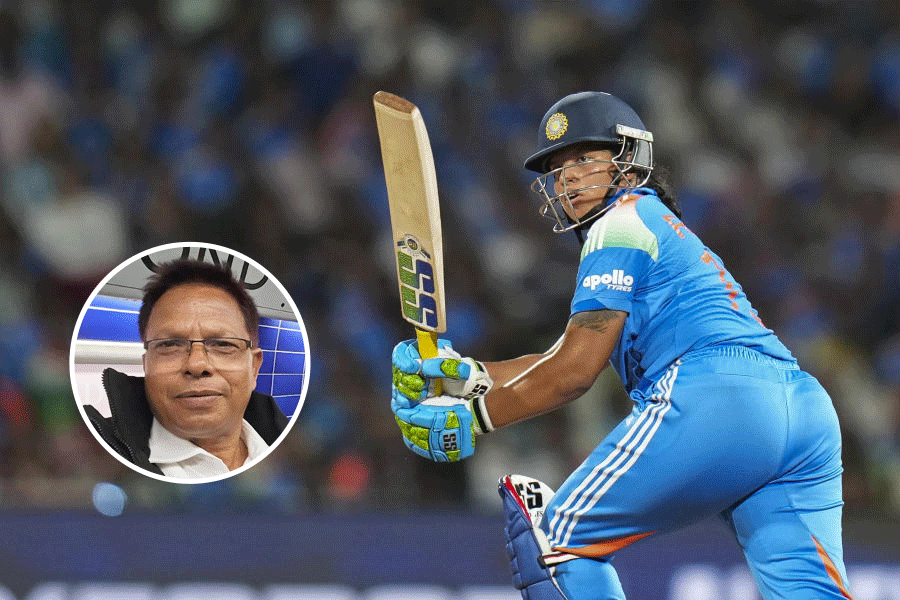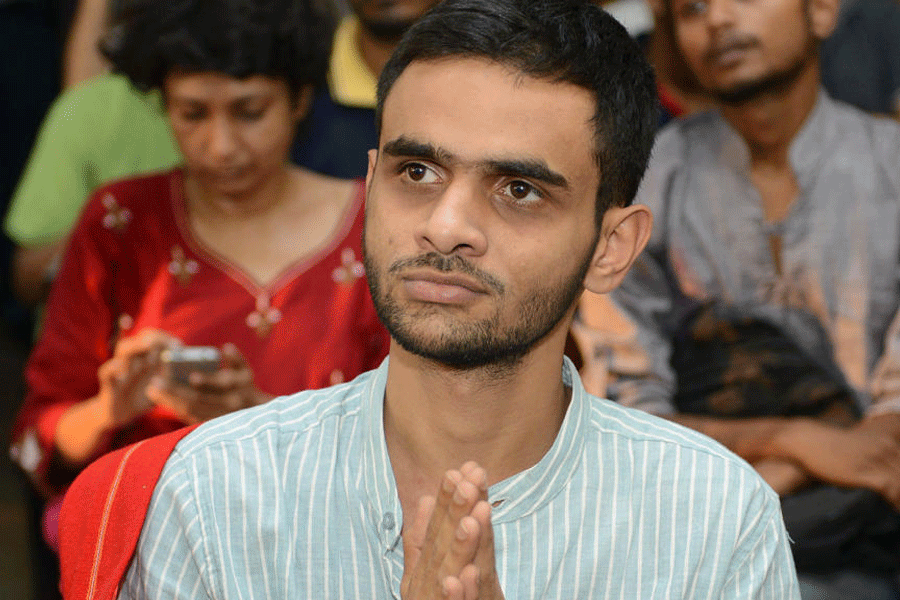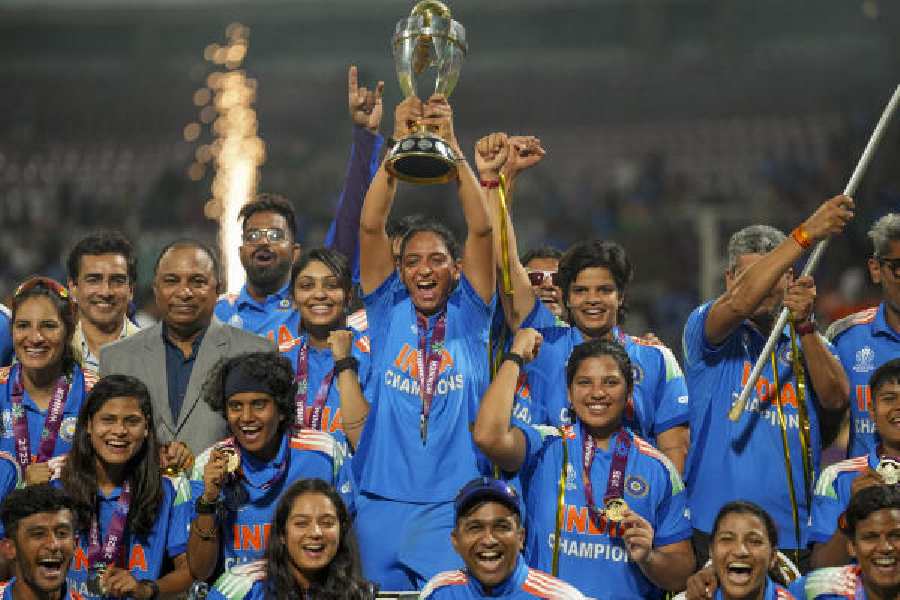
In the words of the German philosopher, Arthur Schopenhauer, "talent hits a target that no one else can hit; genius hits a target that no one else can see". Indian cricket has had a number of batting genii in its short history. As a batsman, I have always been attracted to those with the ability to make the difficult look commonplace. India have had many good players in my time, but, in my opinion, they have had three genii of the art in Pataudi, Gavaskar and Tendulkar. Is Virat Kohli the next manifestation? On what we saw during the Twenty20 World Cup, Kohli is going to have commentators from all over the globe comparing him to those three greats of Indian cricket.
There is no doubt that he has the physical talent. On his record, so far, it seems that he has the mental ability to match his physical talents which allows him to bring out his very best work at the moment that it is most needed. The difference between the very good and the great is the imagination to which Schopenhauer alluded.The greats can see how to succeed when others only see a chance to fail. Kohli has it in spades; as did Pataudi, Gavaskar and Tendulkar.
Some of his innings in the T20 World Cup were inspirational. Australia probably didn't play as well as they would have liked in Mohali, but it took a truly remarkable innings to beat them. I remember watching M.A.K. Pataudi bat against Graham McKenzie at the MCG nearly 50 years ago. Already handicapped by the loss of one eye, Pataudi was also hampered by a hamstring injury, but, batting at number seven in each innings, he belted the best Australia could offer to the tune of 75 and 85 in a remarkable display of inspired batting. What he could have achieved with two eyes and on two legs we can only imagine.
Pataudi had skill, courage, confidence and a determination to make a difference to Indian cricket as he refused to let any obstacle stand in his way. His deeds inspired generations of Indian cricketers to come. Sunil Gavaskar was "The Master". Small of stature, but big of heart, he withstood the might of the West Indian fast-bowling contingent at a time when they brushed aside most whom they came up against. His record in India and overseas stamp him as one of the best that have played the game. That he did it opening the innings makes his achievements even more laudable.
His one-day international batting did not reach the heights of his Test deeds, but had he grown up in a later era with the modern bats, smaller grounds and a mindset conditioned by growing up with the shorter format, his short-form record would have looked very different.
Sachin Tendulkar could have been anything. The earliest version of Tendulkar could have climbed even loftier heights than he did. In that iteration, he was a will-o'-the-wisp who made the lives of bowlers a misery. He was a target that they just couldn't nail down. He had all the shots. It seemed there was nothing that he could not do with a bat in his hand.
Either because of injury or the weight of expectation, "The Little Master" became more conservative as his career went on. This conservative mindset caused him to be more restricted in the range of shots he had available and prevented him from building an even more meritorious record.
T20 came along just a fraction too late for Tendulkar to achieve much on the international stage, but his IPL record suggests that he would have been a force with which to be reckoned in that format as well.
I like what I see with Kohli.
He has talent, but, more importantly, he has presence. He looks like he belongs and he looks like he wants to make a difference.
Talent is one thing. Many players have talent, but very few have the self-belief to back their talent. Kohli is one who demands to be noticed and who thrives on the spotlight.
One of the challenges for elite athletes is to remain in the real world and not get carried away with the false charms of adulation and fame. When one is travelling and living in a bubble which is the lot of elite cricketers, especially those in India, it is easy to become distracted. There is a list of victims much longer than a list of those who have survived and thrived.
The trick is to remember that the real world is actually the one outside the bubble and that inside the bubble is virtual reality. If one can remember that and focus on the reason for being inside the bubble, life is likely to be quite fulfilling. Those who think that the bubble is the real world generally come crashing down and fulfilment is the last thing on their list of experiences. Provided he keeps his feet on the ground, I believe Kohli's name will be mentioned in the same breath as Pataudi, Gavaskar and Tendulkar by the time he has finished.
It is interesting to compare the progress of the three at a comparable period in their careers. With the help of the Wisden Impact Index, I have discovered that at a comparable stage in their respective careers, Gavaskar has a 33 per cent higher Test impact (in a match and series context) than Kohli and a 72 per cent higher impact than Tendulkar, while Kohli has a 29 per cent higher impact than Tendulkar. In terms of consistency, Gavaskar has the lowest failure rate of 29 per cent compared to Kohli (45 per cent) and Tendulkar (48 per cent) at the comparable stage (72 Test innings). Looking at their overall career impact, Tendulkar's is 6 per cent higher than Gavaskar and 3 per cent higher than Kohli with Kohli's being 3 per cent higher than Gavaskar.
In terms of consistency across their careers, Gavaskar ended on 36 per cent, Tendulkar on 42 per cent, with Kohli sitting on 45 per cent. One would imagine that Kohli will lower that rate as he moves into the most productive years of his career.
In ODI cricket, Kohli and Tendulkar have remarkably similar failure rates after 163 innings (Kohli's current total) at 43 per cent and 44 per cent, respectively, but Kohli has had an 8 per cent higher impact than Tendulkar meaning that his runs in the context of the game and series are measured as being more important. Over a complete career, Tendulkar turns the tables on Kohli with a 2 per cent higher impact overall.
Comparing them across Tendulkar's entire ODI career, Kohli has scored a larger proportion of runs vis-à-vis Tendulkar albeit at a lower Strike Rate Impact, but when it comes to building partnerships, absorbing pressure and chasing, Kohli is ahead of Tendulkar.
In fact, Kohli has absorbed the most pressure of any Indian batsmen in ODIs and has the highest Chasing Impact in ODI history which puts him in rare air indeed. Especially when you consider what M.S. Dhoni has achieved in his illustrious career.
Kohli appears to be a driven individual. So, on the evidence so far, we can look forward to many more match-winning performances and series-defining efforts from him before he has finished. I am not prepared to say that his record will be better than his illustrious predecessors, but nor am I ruling it out.











